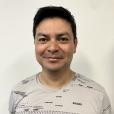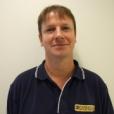Window into the cell
Access to a ‘window into the cell’ with University of Wollongong cryogenic electron microscope at ANSTO.

Showing 401 - 420 of 655 results
Access to a ‘window into the cell’ with University of Wollongong cryogenic electron microscope at ANSTO.
New class of conducting materials found for potential use in next generation fuel cells and other applications.
International study has revealed a clustering of charged particles in the microgravity environment of space,with implications for the development of materials and better drugs that depend on the mixing of two or more charged particles.

Researchers from ANSTO and NASA’s Jet Propulsion Laboratory have uncovered the likely mineral composition of Saturn’s largest moon, Titan, revealing a world of exotic organic crystals unlike any found on Earth.
ANSTO has almost seventy years of experience in advancing an understanding of the management of spent nuclear fuel and delivering safe and reliable forms for radioactive waste.
Research provides insights into Tasmania’s Lake Vera more than 800 years ago

Sample environments, Data Analysis, Mail-In Services
Improving aquaculture for food production in Papua New Guinea
The new trilateral security partnership between Australia, the UK and the US (AUKUS) is a historically significant development for nuclear science and technology in Australia.
Inspiring young women to be part of next generation of scientists.
Modelling and experimentation - a powerful combination in probing mechanical properties of ion irradiated materials through nanoindentation.

Thirty years of ANSTO's unique capability in monitoring fine particle pollution provides insight on bushfire smoke.
A team of ANSTO health researchers, staff at the Centre for Accelerator Science and Dr Melanie Ferlazzo, a postdoc from the French National Institute of Health and Medical Research (INSERM), and scientists from the French Space Agency (CNES), are collaborating on investigations to determine the impact of secondary particles on human cells using the new microprobe beamline at ANSTO’s Centre for Accelerator Science.
ANSTO has been awarded an Athena Bronze Institution Award, acknowledging our dedication to improving workplace equality, diversity and inclusion.

His Excellency General the Honourable David Hurley AC DSC (Retd), Governor-General of the Commonwealth of Australia and Her Excellency Mrs Linda Hurley visited ANSTO’s Innovation Centre nandin and several facilities including the OPAL multipurpose reactor this week for a tour after learning of the ANSTO-nandin win in the NASA SpaceApps COVID 19 Challenge.